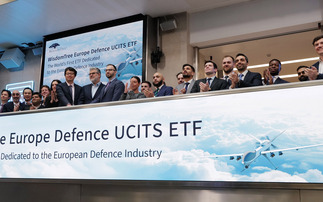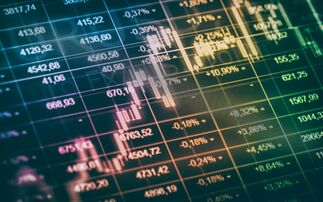What does the Global Industry Classification System mean for your tech-related portfolio and what can you do about it?
By now, you will likely have heard of the recent changes to industry classifications by GICS - the Global Industry Classification System, developed by S&P Dow Jones and MSCI. If not, here's the gist:
- The Telecommunication Services sector has been expanded to include companies previously categorised as Information Technology and Consumer Discretionary stocks
- This newly expanded sector - now known as ‘Communication Services' - aims to reflect the changes to the ways in which we communicate and access entertainment
- It now includes stocks like Alphabet, Facebook and Netflix
So what does this mean for your tech-related portfolio and, more importantly perhaps, what can you do about it? Here's what you need to know.
Watch our video on investing in US Tech
Have you been "de-FANGed"?
If you were holding a broad-based exposure such as the S&P 500, there is no impact on your portfolio. As a market capitalisation weighted index covering primarily US large caps, you'll still be holding the same companies as you did before the GICS change. The "change" here is in labeling alone: you will effectively have less exposure to the tech and consumer discretionary sectors, but more exposure to the (tele)communication services sector.
View Lyxor's range of US equity ETFs
Sector impact on the S&P 500 index after GICS re-classification
Source: CFRA, S&P Dow Jones Indices, S&P Capital IQ, as at 18/09/2018.
If on the other hand, you held an S&P 500 Technology ETF - or any tech ETF based on the GICS classification standard - you may face a bit of a dilemma. While you previously had close to 50% exposure to tech titans Apple, Microsoft, Facebook and Alphabet, you now have a very different and less growth-oriented portfolio. So how could you go about regaining your original exposure?
The NASDAQ-100 - where Tech still means Tech
There are three different routes you can take. You could:
- Reduce your exposure to the S&P 500 Technology ETF and buy shares in Facebook and Alphabet separately to make up for their absence
- Buy an ETF tracking the new S&P 500 Communications Services sector - though this would entail potentially unwanted exposure to defensive telecommunications stocks such as AT&T, Verizon and CenturyLink, and to media companies such as Disney and Comcast. About 20% of the index is represented by these 5 stocks alone.1
In our view, the NASDAQ-100 Index provides better exposure to US companies driven by technological innovation than the more traditional S&P 500 Technology benchmark. While still providing exposure to the traditional tech titans you would expect to find - Apple, Microsoft, Alphabet, Facebook and Intel, to name a few - the NASDAQ-100 also includes increasingly tech-dependent consumer discretionary stocks. Companies like Amazon and Netflix, typically viewed as a retailer and media company respectively, incorporate technology at the very core of their business models. Amazon in particular is a leader, and its cloud services business is its fastest-growing segment and a major profit driver in recent years.
The NASDAQ-100 also offers much better diversification compared to the new S&P 500 Technology sector, where Apple and Microsoft now represent almost 40% of the index.1 Furthermore, we believe the GICS classifications sometimes feel out of date, or defy logic - even with recent changes taken into account. For example, Visa and Mastercard are still classified as Information Technology companies, but American Express sits in the Financials sector.
In our view, most investors would prefer exposure to the likes of Amazon or Netflix as part of their bet on technology rather than AT&T and Verizon - or for that matter, Visa and Mastercard.
Why choose Lyxor for the NASDAQ-100?
If you want diversified exposure across traditional tech titans, increasingly tech-dependent retail and media giants, and innovative healthcare and biotech firms, look no further than our 17-year old NASDAQ-100 ETF. Our fund is:
- Efficient: the most efficient NASDAQ-100 ETF in the market over the past 3 years1
- Dependable: at 17 years old, the most established of its kind in Europe1
- Accomplished: over €650m in assets under management1
Find out more about the Lyxor NASDAQ-100 UCITS ETF
Watch Chan Samadder, Head of Equity ETFs at Lyxor, reveal how best to invest in US Tech
This article is for informative purposes only, and should not be taken as investment advice. Lyxor ETF does not in any way endorse or promote the companies mentioned in this article. Capital at risk. Please read our Risk Warning below.
1Source for all data unless otherwise indicated: Lyxor International Asset Management, Bloomberg, as at 28/09/2018. Efficiency data is based on the efficiency indicator created by Lyxor's research department in 2013. It examines 3 components of performance: tracking error, liquidity and spread purchase/sale. Each peer group includes the relevant Lyxor ETF share-class and the 4 largest ETF share-classes issued by other providers, representing market-share of at least 5% on the relative index. ETF sizes are considered as an average of AUM levels observed over the relevant time period. Detailed methodology may be found in the paper ‘Measuring Performance of Exchange Traded Funds' by Marlène Hassine and Thierry Roncalli. Past performance is not a reliable indicator of future results. Statements refer to European ETF market.
Risk Warning
This document is for the exclusive use of investors acting on their own account and categorised either as "Eligible Counterparties" or "Professional Clients" within the meaning of Markets in Financial Instruments Directive 2014/65/EU. These products comply with the UCITS Directive (2009/65/EC). Société Générale and Lyxor International Asset Management (LIAM) recommend that investors read carefully the "investment risks" section of the product's documentation (prospectus and KIID). The prospectus and KIID are available free of charge on www.lyxoretf.com, and upon request to [email protected].
The products mentioned are the object of market-making contracts, the purpose of which is to ensure the liquidity of the products on the London Stock Exchange, assuming normal market conditions and normally functioning computer systems. Units of a specific UCITS ETF managed by an asset manager and purchased on the secondary market cannot usually be sold directly back to the asset manager itself. Investors must buy and sell units on a secondary market with the assistance of an intermediary (e.g. a stockbroker) and may incur fees for doing so. In addition, investors may pay more than the current net asset value when buying units and may receive less than the current net asset value when selling them. Updated composition of the product's investment portfolio is available on www.lyxoretf.com. In addition, the indicative net asset value is published on the Reuters and Bloomberg pages of the product, and might also be mentioned on the websites of the stock exchanges where the product is listed.
Prior to investing in the product, investors should seek independent financial, tax, accounting and legal advice. It is each investor's responsibility to ascertain that it is authorised to subscribe, or invest into this product. This document is of a commercial nature and not of a regulatory nature. This material is of a commercial nature and not a regulatory nature. This document does not constitute an offer, or an invitation to make an offer, from Société Générale, Lyxor Asset Management (together with its affiliates, Lyxor AM) or any of their respective subsidiaries to purchase or sell the product referred to herein.
Lyxor International Asset Management (LIAM), société par actions simplifiée having its registered office at Tours Société Générale, 17 cours Valmy, 92800 Puteaux (France), 418 862 215 RCS Nanterre, is authorized and regulated by the Autorité des Marchés Financiers (AMF) under the UCITS Directive (2009/65/EU) and the AIFM Directive (2011/31/EU). LIAM is represented in the UK by Lyxor Asset Management UK LLP, which is authorized and regulated by the Financial Conduct Authority in the UK under Registration Number 435658. Société Générale is a French credit institution (bank) authorised by the Autorité de contrôle prudentiel et de résolution (the French Prudential Control Authority).
Research disclaimer
Lyxor International Asset Management ("LIAM") or its employees may have or maintain business relationships with companies covered in its research reports. As a result, investors should be aware that LIAM and its employees may have a conflict of interest that could affect the objectivity of this report. Investors should consider this report as only a single factor in making their investment decision. Please see appendix at the end of this report for the analyst(s) certification(s), important disclosures and disclaimers. Alternatively, visit our global research disclosure website www.lyxoretf.com/compliance.
Conflicts of interest
This research contains the views, opinions and recommendations of Lyxor International Asset Management ("LIAM") Cross Asset and ETF research analysts and/or strategists. To the extent that this research contains trade ideas based on macro views of economic market conditions or relative value, it may differ from the fundamental Cross Asset and ETF Research opinions and recommendations contained in Cross Asset and ETF Research sector or company research reports and from the views and opinions of other departments of LIAM and its affiliates. Lyxor Cross Asset and ETF research analysts and/or strategists routinely consult with LIAM sales and portfolio management personnel regarding market information including, but not limited to, pricing, spread levels and trading activity of ETFs tracking equity, fixed income and commodity indices. Trading desks may trade, or have traded, as principal on the basis of the research analyst(s) views and reports. Lyxor has mandatory research policies and procedures that are reasonably designed to (i) ensure that purported facts in research reports are based on reliable information and (ii) to prevent improper selective or tiered dissemination of research reports. In addition, research analysts receive compensation based, in part, on the quality and accuracy of their analysis, client feedback, competitive factors and LIAM's total revenues including revenues from management fees and investment advisory fees and distribution fees.













